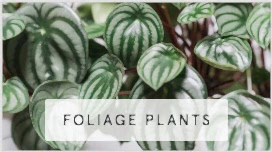The Elements of a Standout Centerpiece

The Elements of a Standout Centerpiece
It’s often the little details that matter most in a living space. That’s especially true if you’re planning a meal or hosting a party and want to liven up the table with a centerpiece. These arrangements can change the tone and tenor of your space, lending a room that’s a little bit informal a more polished and refined look.
A centerpiece can also be the perfect finishing touch in a room that needs just that little extra something. If you can’t quite put your finger on it, it could be that flowers are just the thing to provide some eye-catching contrast to other elements in the room while drawing the eye to the table, where everyone will ultimately gather.
What makes a centerpiece worthy of a little extra attention? There’s more to it than setting an ordinary flower arrangement in the middle of the table, although that’s certainly one option if you’re pressed for time and just want to make sure that you’ve put some energy into the décor. Otherwise, take a methodical approach when planning your centerpiece to truly make a statement.
What Makes a Centerpiece Standout
A truly noteworthy and memorable centerpiece stands out for the details that contribute to its design. It’s all in the color, the texture, and the variety. After all, a centerpiece can incorporate more than just flowers, although flowers are often the starring element of the show. Otherwise, you can have a free-for-all by incorporating all types of additions.
Select those based on the occasion. If it’s the holiday season, accents like sprigs of holly, pinecones, and Christmas candies in small crystal jars complement a holiday floral arrangement beautifully. If it’s Halloween, you can go all out with all things black and orange. You could even have a hollow skull or pumpkin containers surrounding the flowers for a spooky finishing touch.
These types of options are endless, as there’s no dearth of interesting materials you can add to a centerpiece. Since you aren’t limited to flowers, have fun mixing things up with a variety of additional details. Invite plants into the mix. Bring in candles, unique vases, plates, glasses, old watering cans, straw baskets, and even foods like fruits and candies. You’re only limited by your imagination, so have fun bringing it all together.
Why Choosing a Theme is Useful
You don’t necessarily have to have a theme to create a standout centerpiece, but it can help you more effectively make your vision a reality. For example, a fall theme will immediately call to mind autumnal tones like rusty orange, rich crimson, and warm yellow. Using the colors as your anchor, you can then strategize the centerpiece moving upward. Think of the types of textural elements that resonate with fall, along with visual details like leaves and pumpkins that contribute to an even more eye-catching display. When everything comes into place, it’s also easier to select a floral arrangement (the Chelsea makes a sensible and stylish pick for a fall-themed centerpiece).
Themes don’t have to be as specific as a season or a holiday, though. You might opt for a less focused, broader theme that allows you even greater flexibility when designing the centerpiece. If you have a love of vintage design, for example, that could be your inspiring theme. Maybe your theme is “oversized,” in which case you might incorporate a couple of larger arrangements in sizable vases to make a bold statement.
The bottom line is that narrowing it down to a particular theme can be helpful if you want to make the design process easier. Instead of selecting a theme at the beginning, you could simply select an arrangement (or two!) that you want to incorporate or that you hope will be the focal point of the centerpiece. You can then play on that to select the details that culminate in a standout accent for your table.
How You Can Really Make It Pop
Don’t be afraid to step outside of your comfort zone. A centerpiece can be a focal point, but it’s not so large that it will overwhelm the room if the way it’s designed is slightly out of left field or differs dramatically from the spirit of the rest of the room. In fact, those are great ways to elevate the centerpiece and make it an attractive detail that provides just the right level of contrast to other details in your space.
Often, the arrangement itself can be the star of the show, so have fun selecting something amazing, like the Burgundy Anthurium Bouquet that reflects the beauty of the islands with a dramatic twist. Make a statement with something that bears a distinctive shape, like You Are Amazing! is a genuinely amazing option that will light up your table and serve as a conversation piece at the same time. If it’s an occasion strictly for you and your special someone, scattering some rose petals is a thoughtful way to heighten the romance in the room.
Don’t forget about plants, either. You can either position them alongside your flower arrangement, arrange a few different plants on their own, or you could select just one standout plant to create an eye-catching centerpiece. Assess everything about the plant, from the shape of the leaves to the style of the container. All of it can make a difference, lending your table either a fresh and modern look or a classic and understated appearance.
Something like the Sweetheart Plant Set makes a solid addition to your centerpiece because it can be used in so many different ways. Set one on each side of a vibrant bouquet, for example, or on either side of a larger plant to have your green moment. You can do something similar with other smaller plants, like the Echeveria in Mini Mateo Pot or the Haworthia in Mini Mateo Pot. The advantage is that succulents tend to last for quite a while and don’t require much care or maintenance, so when they’re done dressing up your table, you can use them to accent your desk or another area in your home.
Why You Should Consider Other Details
Take a good look around the room. If you’re having trouble putting together a centerpiece or you just want some inspiration, you can take your cue from the elements that occupy your dining area. At a bare minimum, you should pay close attention to scale. If you have a relatively compact table, for example, a larger centerpiece will not only crowd the space and make it difficult to eat but also overwhelm the room and risk looking comically large.
By contrast, a small centerpiece can almost disappear if you have a larger table. It’s smart to size your centerpiece in relation to the table’s size, allowing it to stand out for all of the right reasons. Then, think about the mood of the room. Is it light and upbeat? Do you smile every time you step inside, maybe because the walls are yellow, or you have an unfiltered view of your yard? Or does the room evoke a more moody and dramatic quality because of gothic elements or old-world artwork?
While you can definitely play along with the room’s overarching theme, you can also have a little bit of fun by straying in a slightly different direction. It might look a bit unusual to create a very contemporary centerpiece in what is quite obviously a dining room with a classic design, or vice versa. But in a space that’s got a bit more balance, you could veer in one unexpected direction and design a standout centerpiece that captures attention.
What Types of Elements to Include
The list of interesting details that bring centerpieces to life is endless. Sure, there are the customary candlesticks and aforementioned seasonal elements, but you can take things a step further. How about an heirloom vase passed down in your family through the generations? That adds an instant personal touch to your centerpiece and gives it a story that you can share during the meal.
Maybe it’s a wooden crate or an antique birdcage. Branches wound with twinkling lights can be dazzling. Cube vases filled with sparkling orbs will catch the eye and draw attention to the flowers on the table. Porcelain pitchers are nice for conveying a relaxed vibe during the warmer months. Use driftwood or even miniature sleighs to accent your fall and winter centerpieces. Watering cans can be rustic and down to earth, a nice touch if you’re hosting a casual lunch and want to set a specific tone.
--
Ultimately, it all comes back to the details. Creating a centerpiece can be as easy as choosing an arrangement that you like or as complex as incorporating a variety of details that turn it into more of a work of art. There are no rights or wrongs — it’s about having fun and expressing yourself while giving your loved ones a reason to smile.












